Clean Community
Research - Wire-framing - Prototyping
Usability Testing - UI Elements
The Process
Background
When the winter season comes to a close, communities are often left with litter scattered throughout. The Clean Community app aims to assist individuals who are eager to contribute to their community's cleanliness by offering features such as a trash can locator and convenient access to necessary supplies. Moreover, local residents have the opportunity to create and organize clean-up events through the app.
Tools Used
Adobe Illustrator, Figma, Figjam, Google Suite, Miro, DoveTail, Zoom
The Problem
The problem is trash, as winter has come to a close and the snow has left behind a plethora of litter which is now blowing around our streets in the spring gales. How can we keep our cities cleaner and reduce pollution and injury to wildlife?
The Solution: Our solution is an application to bring the community together in an effort to keep our environment clean year-round by giving incentives for people who take time out of their day to clean up their community and to encourage repeated litter collection.
Proto persona
Began research by creating a proto-persona.

Hypothesis Statement
Citizens wishing to participate in the collection of litter need a way to both stay motivated and be reminded to clean up their public spaces. How might we improve community clean-up efforts so that incidents of litter collection in public spaces are more frequent and more enjoyable for participants?
Survey
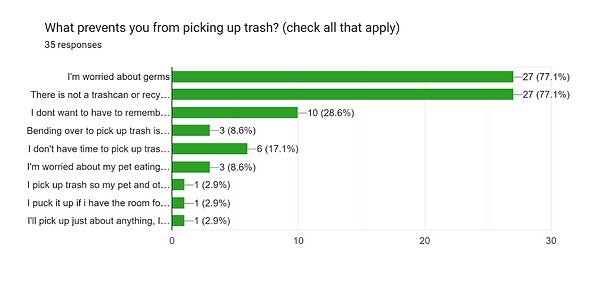

In our research plan, we established several questions.
-
How can we motivate people to keep our cities clean and prevent littering?
-
What barriers do people face when presented with an opportunity to collect litter?
-
What is the level of desire to clean up litter if encountered?
We conducted a survey using Google Forms and we received 35 responses.
Key points from our surveys are…
-
83% have adopted a cat before
-
91% have never fostered a cat before
-
76% aren’t looking for a specific breed when adopting
User Interviews
We conducted five interviews via Zoom.
Our team’s goal was to understand people’s concerns regarding litter in their neighborhood and to explore what barriers they encountered to cleaning up the litter. We hoped to gain insight into how we might provide a tool to ease this process and encourage repeated litter collection to maintain clean public spaces. Our initial intent was to also incorporate a gamification element to the app so we asked a select number of questions about whether the interviewees play mobile games and what they do or do not like about them.
Three areas of inquiry guide our line of questioning:
Concern - What are participants’ levels of concern in regard to litter? Do they feel there is a trash problem in their community?
Motivation - What would motivate users to pick up trash? Are they interested in goals around community cleanliness? What barriers exist?
Mobile Game Specifics - How can an app help them achieve their goals? What would make picking up trash more fun? How to incentivize litter collection?
Affinity Diagram
The data we received from the interviews, were organized into an affinity diagram.

Competitor Analysis
During our Competitor Analysis, we looked at 4 apps: Rubbish, LitterCleanUp, Glitter, and Litterati.
We discovered there are a lot of apps out there already doing something similar to the goals we wanted to achieve. LitterCleanUp allows users to submit their cleanups, that is record every single piece of trash they pick up. This app also provides a profile page that tracks users progress and shows a map of all the litter they have picked up around the world. The other app “Rubbish” aims to work with businesses and residents to map litter in their communities and clean it up. This app includes personal stats, badges, and real-time litter data collection.

User Persona & Empathy Map
Our Team decided to use both the User Persona and the Empathy Map tools. We feel that this gives us a better understanding of the user’s experience and motivations.
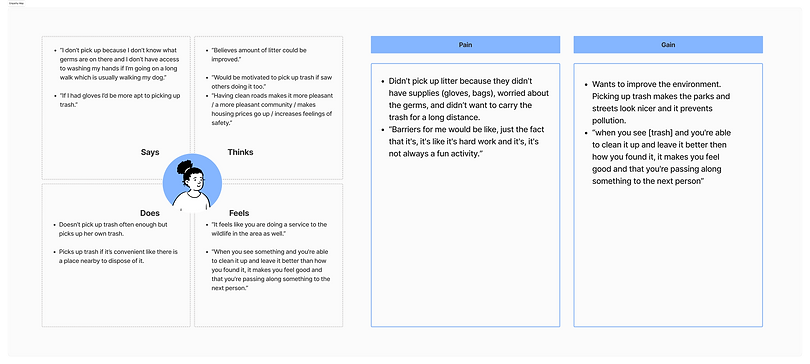

After establishing our user we focused on three paths that the user could take within our application. In Clean Community, the user can find a trash can near them with the BinFinder tool, search for supplies for litter collection via the Supply Lockers, or create events to engage their community in litter collection.
Our User insight,
‘Alexis is environmentally conscious and needs an app to help her and her friends pick up trash in their community conveniently because she struggles to find time, garbage cans, supplies, and motivation.’
helped to inform our Problem Statement,
‘Outdoor lovers dislike seeing trash in their communities and believe that picking up litter is the right thing to do. However, concern over germs, a lack of supplies, and limited access to trash receptacles prevent them from acting on their good intentions. Conscientious community members need an efficient and rewarding way to acquire supplies for litter collection, locate sites to dispose of gathered trash and connect with others working to keep their neighborhoods and parks clean.’
Both of which were guiding points in the creation of our User Persona.
User Journey Map, Flows, Storyboard
Through our Journey Map and Storyboard we wanted to follow our persona, Alexis, through three tasks; looking for a trash can, creating an event, and gathering supplies from a Supply Locker.



Wireframes
paper sketches

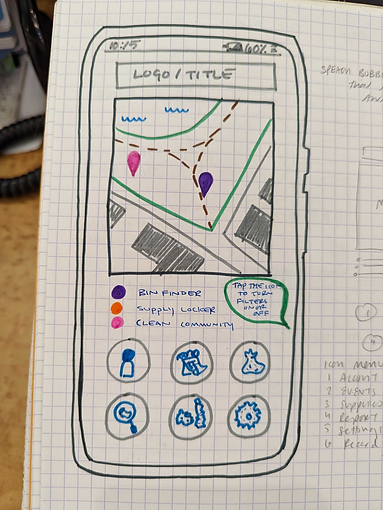
lo-fi prototypes




mid-fi prototypes
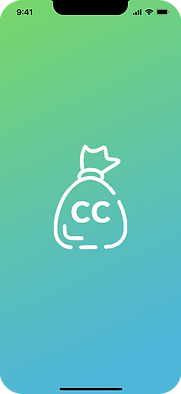
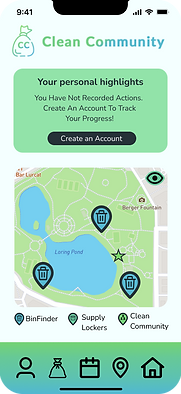
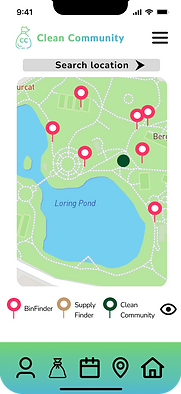

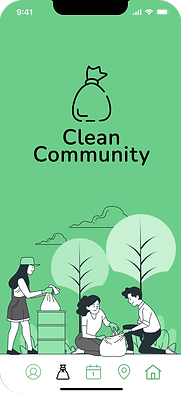
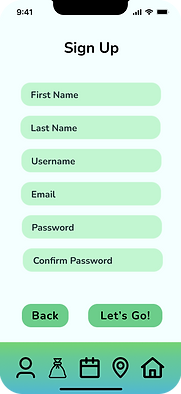


We conducted 5 tests where we asked each user to…
-
Find a trash can near them.
-
Make an account.
-
Create an event.
-
Take supplies from a Supply Locker.
By embracing user feedback we were able to refine our mobile mockup and create a more polished and user-centric solution to deliver an optimal user experience.
After our testing and receiving feedback, we identified several areas for improvement. We recognized the need to make changes to the:
-
icons
-
color elements throughout the prototype
-
modify the personal locator cursor
User Testing
Through a series of user tests, we gained valuable insights that informed iterative improvements to our designs, making them more intuitive and streamlined. We conducted four user testing to gather valuable insights.
During the mid-fidelity testing, we encountered a discrepancy regarding the optimal design for our bin finder icons. To resolve this, we implemented A/B testing and got feedback to finalize the high-fidelity mockup.
A/B Testing
We had users evaluate two different design variations to identify which icons were more effective. The feedback we received revealed that 80% of the users expressed a preference for version A, which featured a trash can-shaped icon as the bin finder. Notably, some users highlighted that the bin finder icon resonated with them more effectively as it accurately represented what they would expect to encounter in a real-world map scenario. These insights played a pivotal role in our decision-making process, guiding us towards the final design iteration that aligned with user expectations and enhanced usability.

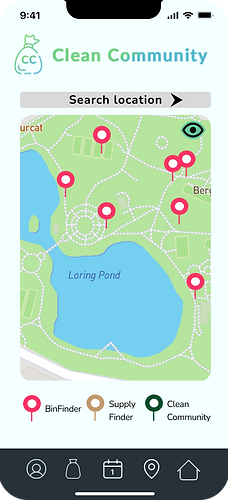
Final prototype
In our final prototype, we aimed to make an app experience that is as clean and realistic as possible while making the necessary changes for ease of use and user delight.



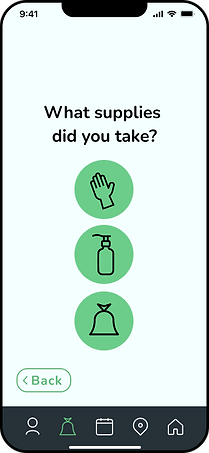




Website Landing Page
For our website, we built a single page to promote the app we had created. Based on the fresh and calming design of the app our website utilizes playful illustrations and showcases the full embedded clickable prototype.

Conclusion
In conclusion, we are really happy with the app we have created. It was not the end result we had envisioned from the outset as we left our desires to gain experience in gamification behind in pursuit of accurate representation of the data collected and in an effort to serve the user to the best of our ability we decided to leave the gamification features behind until we had established the app more fully. We hope to explore more of our endless ideas in the future.
One of our objectives for the future of Clean Community is to introduce gamification elements, incorporating small mini-games that encourage users to actively search for and locate trash cans within their community. This gamified approach aims to enhance user engagement and promote a sense of accomplishment in keeping their surroundings clean.
We also plan to establish partnerships with local businesses to introduce incentives and rewards for active app users. By collaborating with these businesses, we aim to create a mutually beneficial ecosystem where users can earn exclusive benefits, discounts, or other incentives for their participation in maintaining a clean environment.
Furthermore, we envision incorporating social media within the app, enabling users to share their experiences through stories, reels, and photos on their profiles. This social aspect not only fosters a sense of community and connection among users but also serves as a platform to inspire and motivate others to actively contribute to the cause of cleanliness.
By pursuing these future goals, our aim is to create an engaging and rewarding user experience while simultaneously fostering a strong community-driven approach to environmental cleanliness.
Conclusion
Given more time, we would’ve liked to expand the website more. There were some pages we weren’t able to create such as the volunteer or merch page. We struggled with our design choices and making sure small details were cohesive within the site. We also learned more about what UI components we should focus on such as if we needed a footer on our page or not. Our next steps would be expanding the pages allowing users to scroll down the site.